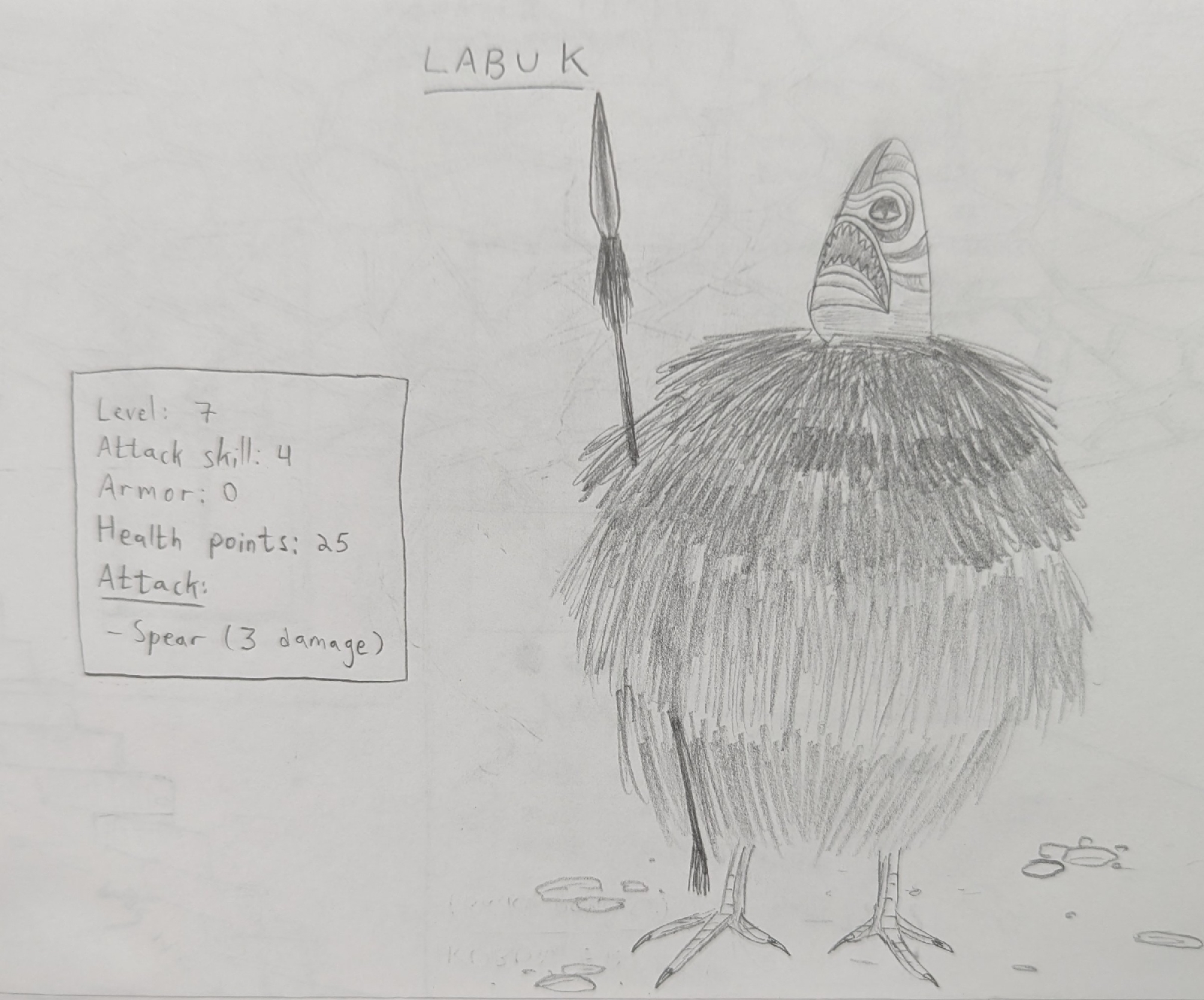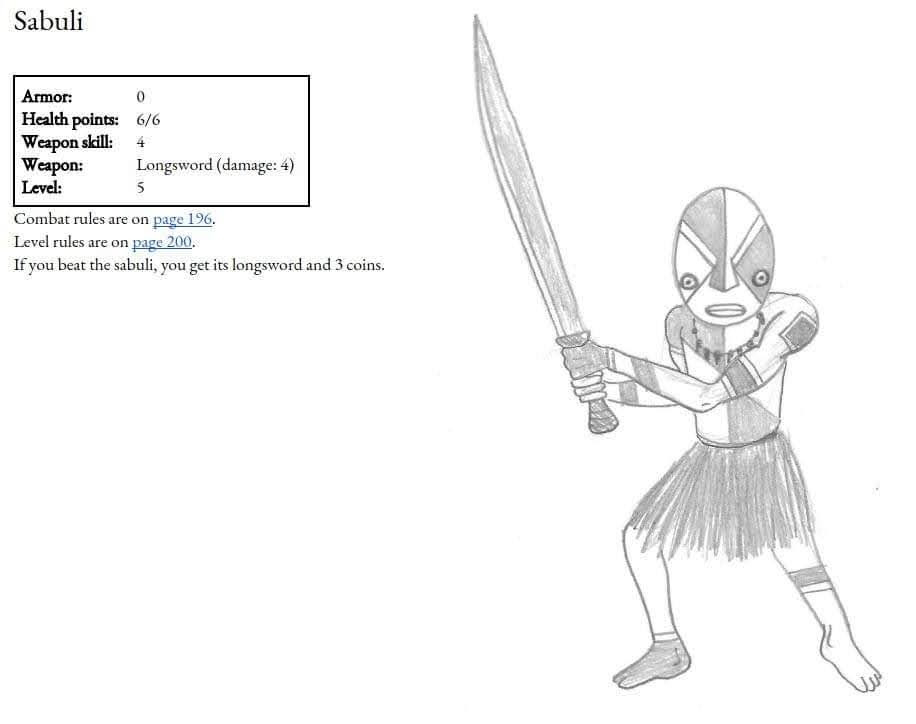This is not a post about combat in gamebooks.
It's a post about how my various trials and errors at making interested combat systems in my own hobby gamebooks, most of which were drawn in notebooks during school.
Space Game (2000)
Space Game was not my first gamebook, but it is the earliest one which I still have.
Combat was simple and turn-based. The player has no agency in combat whatsoever (though the player can select which missions to take, and which upgrades to make for the ship).
Blood of The Bloodless (2001)
I had made several games with simple d6 combat, most of which (except for Space Game) are unfortunately lost.
Eventually I became bothered by the fact the combat was mindless dice-rolling, amd resolved to make a game where actual player skill was required.
The result was Blood of The Bloodless.
In this dungeon-crawl, you don't just
roll the die; you toss it.
From a distance.
And in order to hit, you had to actually hit.
The game fared surprisingly well among my classmates, despite the over-tedious of keeping track of how many hit-points remained in each body-part of your enemy (and there were a lot of enemies).
Enemies also spawned ramdomly (determined by dice, of course), a mechanic which I'd continue to use afterwards.
Mechwarrior 3.745 and Mechwarrior 7.45 (early 2000s)
These ̶p̶l̶a̶g̶i̶a̶r̶i̶z̶e̶d̶ ̶̶ fan-games included several maps I'd made (and later lost). Combat was board-game-like, with specific objectives and scenarios.
Funnily enough, I had had no idea at the time that
Battletech was originally a board game, and not just a series of video games.
In the earlier Mechwarrior 3.745, I still used the throw-your-dice-from-far mechanic from Blood of The Bloodless.
In
Mechwarrior 7.45 I dropped this mechanic, for simplicity's sake.
Demise (mid 2000s)
Demise was a horror game where you fought demons.
I had come up with a system where you had a given amount of power, and were free to choose at any point how much to allocate for attack and how much for defense.
Getting hurt lowered your total power, which made combat even riskier.
It was a good idea, but not entirely ripe; choosing how to distribute your power was fairly obvious, and wasn't as challenging as I'd hoped.
The Legend of Kraati, Hetilla's Quest and an unnamed-and-unfinished game (2010s)
In these games I reverted back to simpe dice-rolling.
Skill was required mostly when deciding how to level up, and in solving puzzles.
The Legend of Kraati (on which I based the Android game Planet 404) had two different combat systems, which helped keep combat a little more interesting:
The Return of Zaltec (2020)
My first published game ☺️
...and the combat system isn't that great.
Players can make choices when they level up, and players can make choices if they happen to have chosen to focus on magic combat.
This alone isn't too bad.
The problem is that there's a lot of combat in the game, with little reward, and it becomes tedious after a while.
Fortunately, Zaltec's strong point is not the combat, but the puzzles (and people cheat anyway in combat, so it's no big deal).
Still, I wanted to improve this, which I did in
Zaltec II: The Generation Stone (2022)
In Zaltec II, I added a fight-or-flight mechanic, allowing players to attempt to flee from any fight.
When leveling up, players can choose to get better at evasion, which also lowers the chances of facing combat encounters altogether.
Here, too, the selling point of the book are the puzzles rather than the combat; the fighting serves to add a sense of adventure and challenge.













